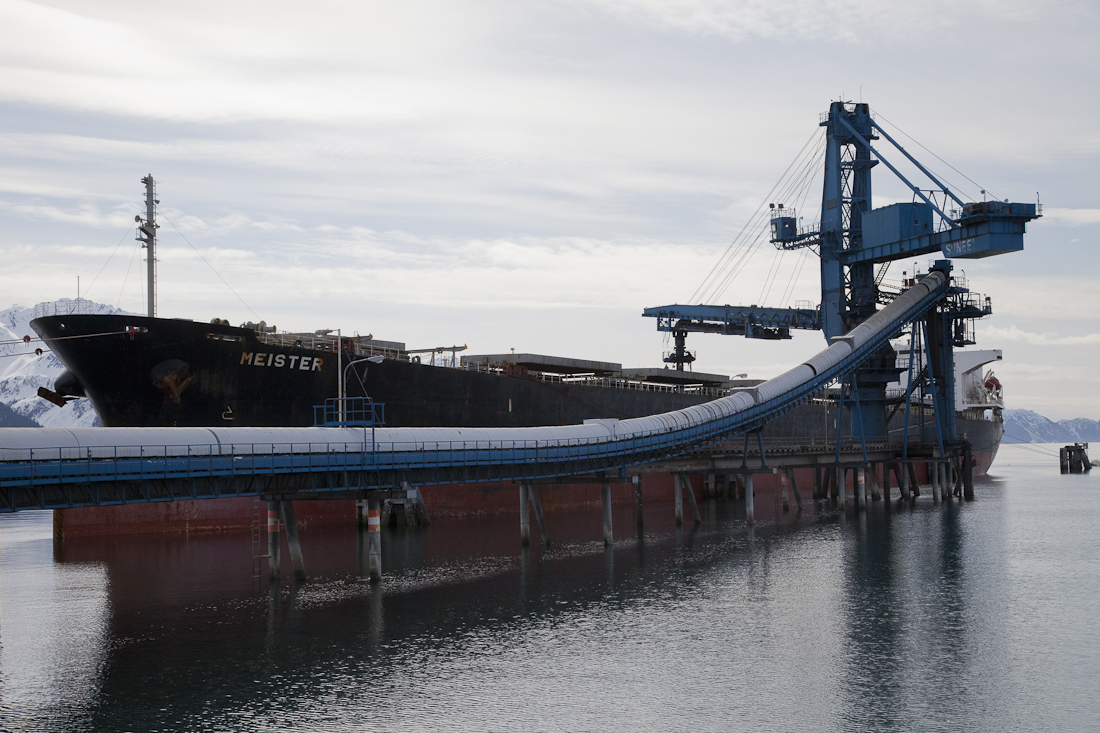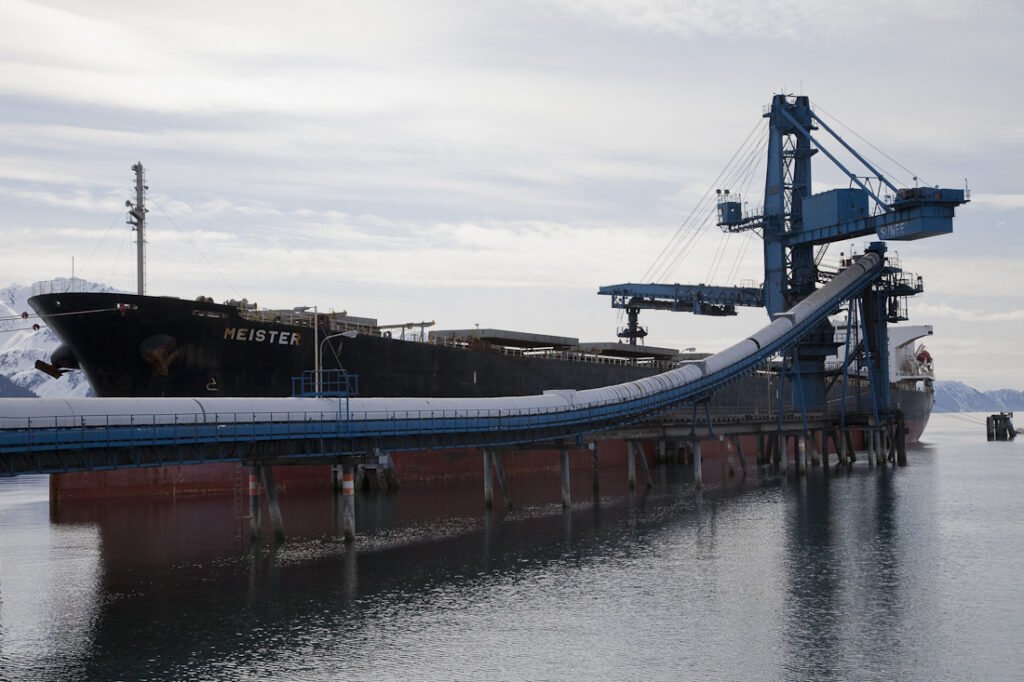
Seward Alaska Dirty Coal Case Argued Before the Ninth Circuit Court of Appeals
This week, five years into the case, Trustees for Alaska attorney Brian Litmans stood before the Ninth Circuit Court of Appeals for oral argument that the Seward Coal Loading Facility is violating the Clean Water Act by spilling coal into Resurrection Bay without a permit. Trustees is representing Alaska Community Action on Toxics and the Alaska Chapter of the Sierra Club. Defendants in the case are the operator of the facility, Aurora Energy Services, and the Alaska Railroad, owner of the Seward Coal Loading Facility.
The port of Seward sits at the head of Resurrection Bay and is the southern terminus for the Alaska Railroad. Coal mined from the Interior of Alaska is transported by rail to the coal loading facility to be shipped to foreign markets.

This photo shows the Seward Coal Loading Facility’s conveyor and shiploading system and a coal tanker. Core to this case are the coal chunks and coal debris that falls from this system into Resurrection Bay. Photo by Mtn Boy Media
Aurora Energy Services does not dispute that coal falls into Resurrection Bay when it loads ships. In fact, they admit 25 tons of coal falls onto the dock from the loader every time a ship is loaded. Aurora has no estimate for how much coal falls into the Bay, but given the amount on the docks, the problem will continue unless the Seward Coal Loading Facility gets a permit.
Aurora contends that it can spill coal into Resurrection Bay because it has a stormwater permit. The District Court agreed with Aurora, and found that permit shielded it from any liability. However, the stormwater permit does not allow for discharges like the ones here, where coal falls into the Bay.
EPA was so concerned about the District Court’s interpretation of what the stormwater permit can authorize that it filed an amicus curiae (friend of the court) brief, to support our case and argued alongside Trustees before the Ninth Circuit. The Ninth Circuit keyed in on this issue and expressed concern over Aurora’s interpretation that the stormwater permit implies authorization of discharges of coal.
Our appeal seeks to have the Alaska Railroad and Aurora Energy control the coal pollution emanating from their facility and comply with appropriate Clean Water Act requirements. “Putting Seward’s residents at risk from coal in our air and water is unacceptable,” Pam Miller, executive director of Alaska Community Action on Toxics, noted in 2009 when we first filed our case. “Especially when simple, cost-effective measures could be put in place to prevent the problem.”
In Wednesday’s court session, the Ninth Circuit judges had tough questions for both sides. For those curious about the types of questions asked, you can listen to the proceedings. A decision is not expected for several months.
The case has garnered national attention. The ruling has the potential to restrict EPA’s ability to regulate pollution discharges through General Permits if the court does not overturn the district court’s decision. Many groups filed amicus briefs in support of Aurora and the Railroad including the American Farm Bureau, the American Forest and Paper Association, the American Petroleum Institute, the Chamber of Commerce, Croplife America, National Association of Home Builders, the Utility Water Act Group, the National Mining Association, the Association of American Railroads, and the State of Alaska.
For decades, the Seward Coal Loading Facility has been spilling coal and coal dust into Resurrection Bay. In 2007, a stalwart and dedicated citizen-activist, Russ Maddox (and member of the Alaska Community Action on Toxics and the Sierra Club), began to notice a growing problem. Coal dust from the coal facility was regularly blowing across town. Maddox began requesting Aurora to make changes to the system to reduce or eliminate these emissions. He also began to notify regulators of the problems. In 2009 Maddox identified the problem of coal spilling into Resurrection Bay without a permit. When no modifications were forthcoming, Trustees for Alaska became involved to bring the Clean Water Act citizen suit to court.
Not related to this case, Alaska Community Action on Toxics released a scientific report earlier this summer on coal dust in Seward. Not surprising the study found that a majority of the air particulates captured by monitors was coal.
NEXT: Court Rules Against Seward Coal Loading Facility
Support Trustees for Alaska’s work to defend Resurrection Bay from dirty coal. DONATE NOW
Seward Alaska Dirty Coal Case, More information


